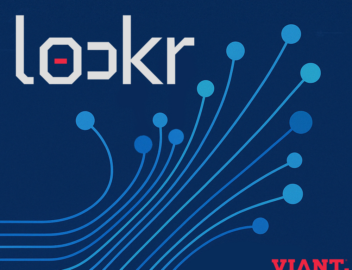

Thank you!
Just one more thing before you go...

lockr Is Taking On Data Partner Contract Liability So Publishers Don’t Have To
By Allison Schiff – AdExchanger
Publishers need multiple integrations to take advantage of any first-party data they collect: alternative identity providers, curation platforms, clean rooms, CDPs, DMPs, exchanges, measurement tools and others.
It’s time-consuming, and publishers have limited engineering resources, which makes it hard to know which partners to focus on.
But that’s not even the biggest roadblock, said Keith Petri, CEO and founder of lockr, an inbox management and email verification startup that’s been recasting itself as a data collaboration platform.
“Publishers also have to manage all of these complex underlying contractual obligations,” he said. “Engineering aside, the legal process they have to go through is a big part of the slowdown.”
On Wednesday, lockr launched lockrKeys, a new feature that Petri says helps publishers with the unmitigated tsuris of contract negotiations. (Bonus points for using a Yiddish word during the high holidays?)
Low key integrations
By using lockrKeys, publishers can turn vendors on and off without a direct integration or the need to sign separate agreements with each of their data partners. lockr maintains the contract, provides the infrastructure and handles the technical maintenance.
lockrKeys builds on, and is housed within, another lockr tool released in January called AIM, which is a self-service solution for testing and deploying multiple identity solutions simultaneously, also without requiring a direct integration. It’s kind of like a switchboard.
At launch, AIM originally stood for “Alternative Identity Manager,” because that’s what it was. More recently, though, lockr has started referring to AIM as an “Audience Integration Manager” to reflect the bigger challenge facing publishers. (It’s a versatile little initialism.)
“The time it takes to maintain healthy relationships with all of these vendors requires continued investment and updating the integrations, which clogs up publisher road maps,” Petri said. “We’ve shifted from only focusing on alternative identity to handling all first-party data for these publishers, including enrichment.”
But publishers aren’t required to relinquish their direct vendor relationships. If they’d rather keep that control, they can still use AIM to manage their integrations while maintaining their own contracts.
The publisher POV
Whether they manage their own contracts or not, it’s a lighter lift for publishers, said Stephanie Mazzamaro, head of programmatic, addressability and ops at sports, finance and lifestyle publisher The Arena Group.
Arena, whose titles include Athlon Sports, The Street, Men’s Journal and Parade, is in the final stages of integrating with lockr and has already used lockrKeys to launch new identity partners. Eventually, Arena plans to use the tool to integrate with other types of data providers and platforms.
It’s important to make these integrations as easy as possible for publishers – or they don’t get done at the rate they need to in light of ongoing signal loss.
Everyone knows identity management has an impact on revenue, Mazzamaro said. But because it’s hard to measure and because direct integrations are a headache, it’s hard to get buy-in from the higher-ups for cookieless testing and other alternative targeting methods.
Not to mention that if a direct integration doesn’t work out, it often takes as much work to remove it as it did to get it going in the first place.
“It’s just as difficult for us to rip code off of a page,” Mazzamaro said. “There’s so much to learn from being able to very efficiently pivot and change quickly without having to ask for [developer] resources.”
And not having to worry about the contract piece is also helpful. Lockr has the direct contract, so lockr assumes any liability.
“The contract can take quite a long time,” Mazzamaro said. “Identity is a really sensitive topic, and so we always want to make sure we’re buttoned up.”
Take a walk on the server side
lockr abides by each respective partner’s terms of service, and AIM only triggers after first checking for browser-level consent signals, Petri said. Lockr recommends that publishers only share data after their consent management platform confirms an opt-in.
So far, lockr has API integrations through AIM with Unified ID 2.0, LiveRamp’s Authenticated Traffic Solution, ID5, Amazon Web Services, Snowflake, InfoSum, Optable and a handful of authentication services, including Auth0 and Google’s Firebase.
Lotame, ArcSpan, FirstID, Illuma and Google Ad Manager (via MadConnect) are in the process of being added to AIM.
Publishers integrate the AIM code, which is a single tag, so lockr can collect data on their behalf, which is passed securely into its server. lockr calls ID providers through a server-to-server integration, and publishers can activate programmatically in real time, directly or through private marketplace deals.
“We firmly believe everything across the entire ad stack is going to move server side, and that’s how we build our products,” Petri said, “so publishers can minimize tags on the page and optimize page speed and the user experience.”
But from the publisher’s perspective, most of that complexity is neatly obscured. Using lockrKeys, publishers can toggle partners on and off on a self-serve basis without having to compile any code or get the developers involved beyond implementing AIM once at the start.
It’s just a matter of clicking a button, Mazzamaro said. “That’s it.”
View the original article in AdExchanger.

Machine-Generated Email Cost Calculator
Unlock additional revenue by integrating with Identity lockr.
Select your industry vertical.
How many registered users or newsletter subscribers do you have?
Average monthly emails sent to each subscriber per month?
What is your average email open rate?Optional
What is your average email click rate?Optional
Has lockr previously analyzed the machine-generated emails in your first-party data?
What was the percentage?
Enter your RPM (page revenue per 1,000 sessions).
What is your average monthly subscriber growth rate?
What is your anonymous web visitors monthly pageview traffic?
What is your authenticated monthly pageview traffic?
Projected Incremental Revenue
Projected Annual MGE Overhead
| MGE Fees | $0 |
| MGE Lost Email Revenue | $0 |
| MGE Advertising Leakage | $0 |
| One month of Email Jail | $0 |
| Incremental Revenue | $0.0M |
Enter your email to receive the full report.
Are you sure you want to leave?
Changes you made will not be saved.







